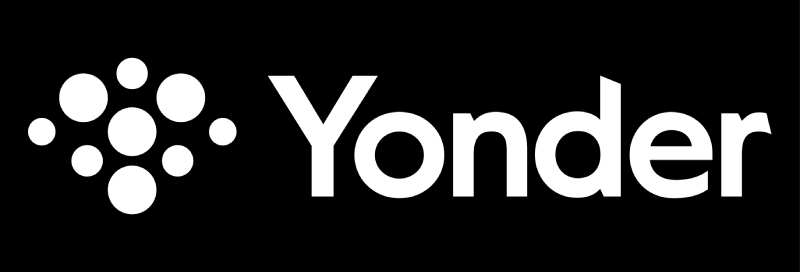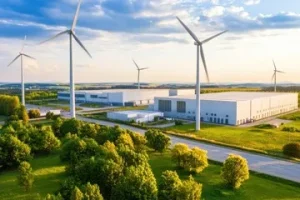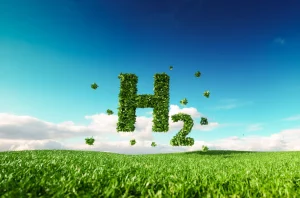What Powers a Green Hydrogen Electrolyser? The Critical Role of Rectifiers and Transformers
When most people talk about the green hydrogen revolution, they focus on electrolysers, the technology that splits water into hydrogen and oxygen. But here’s the twist: the true performance of green hydrogen electrolysers heavily depends on what powers them.
Behind the scenes, it’s rectifiers, converters, and transformers that enable stable, efficient, and scalable hydrogen production. So, if you’re an engineer, project planner, EPC contractor, or energy investor setting up a hydrogen plant, understanding this power infrastructure isn’t optional; it’s essential.
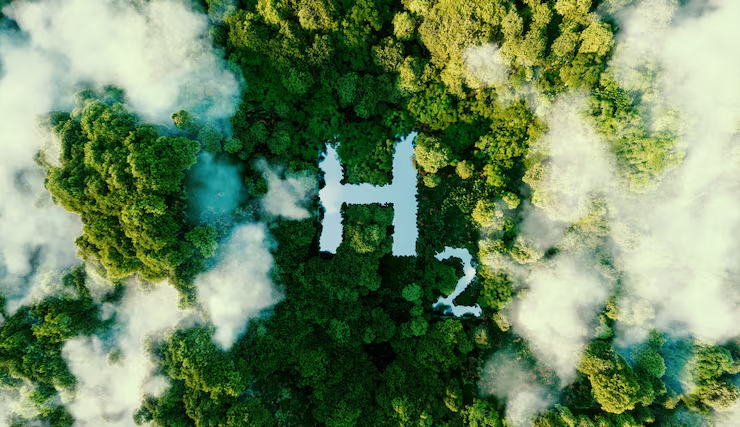
In this blog, we’ll unpack:
- Why rectifiers, converters, and transformers are critical to green hydrogen electrolysers
- The electrical challenges of hydrogen production
- Real-world data and standards shaping component selection
- How advanced power systems unlock efficiency, safety, and scalability
- How YonderH2 is enabling next-gen hydrogen plants with reliable, high-performance equipment
Let’s dive into the heart of hydrogen’s power backbone.
What Are Green Hydrogen Electrolysers and Why Does Power Quality Matter?
A green hydrogen electrolyser uses renewable electricity (from sources like solar or wind) to split water into hydrogen and oxygen through a process called electrolysis. The hydrogen produced is clean and carbon-free, making it a game-changer for decarbonizing industries like steel, mobility, and chemicals.
However, here’s where the complexity kicks in:
Electrolysis demands precise, high-quality DC power, often at megawatt scale. The electricity from the grid or renewables is AC (alternating current), but electrolysers require clean, stable DC (direct current).
That’s where transformers, converters, and rectifiers come in. They handle:
- Voltage transformation
- Phase shifting
- AC to DC conversion
- Power factor correction
- Harmonic reduction
Poor power quality not only reduces efficiency but also increases operational costs, causes downtime, and shortens the life of electrolysers.
The Power Flow: From Grid to Electrolyser
Let’s simplify the typical electrical flow in a green hydrogen plant:
- Power Source (Grid or Renewable)
- Converter Transformer – Adjusts voltage & provides phase shift
- Rectifier / Converter – Converts AC to DC
- DC Bus – Transports power
- Electrolyser Stack – Performs water splitting using DC input
Each stage above requires high precision to ensure efficiency, safety, and longevity of the electrolyser system.
1. Why Converter Transformers Are Essential
A converter transformer isn’t just a step-down transformer. In hydrogen applications, it must:
- Provide multiple phase-shifted outputs for multipulse rectification
- Handle harmonic suppression
- Tolerates high switching frequencies and load dynamics
- Ensure galvanic isolation for safety
According to the IEA Hydrogen Report 2023, future hydrogen plants will need high-MW scale systems. This demands transformers with advanced thermal management and electromagnetic design.
YonderH2 offers custom-designed converter transformers that cater specifically to the requirements of electrolysers, with 6-, 12-, 24-, and even 48-pulse configurations for high-end harmonic control.
2. The Role of Rectifiers in DC Conversion
At the core of electrolysis is the need for high-current, low-voltage DC. That’s where rectifiers come into play.
Types of Rectifiers:
- Thyristor-controlled rectifiers (great for large MW applications)
- Diode-based rectifiers (simple but less flexible)
- IGBT-based rectifiers (for high-speed, high-efficiency applications)
Modern electrolyser plants often use IGBT converters, which offer:
- Fast switching
- Higher efficiency
- Compact size
- Digital control and protection systems
YonderH2 provides state-of-the-art IGBT converters designed for electrolysis, which ensure smoother DC output and help meet grid compliance standards like IEEE 519 and IEC 61000.
Real-World Data: Power Requirements for Green Hydrogen Electrolysers
Let’s look at the numbers.
Electrolyser Capacity | DC Voltage | DC Current | Typical Rectifier Setup
1 MW PEM | 500 V | 2000 A | IGBT or 12-pulse thyristor
10 MW Alkaline | 1000 V | 10,000 A | 24-pulse thyristor
100 MW Plant | 1000–1500 V | 100,000 A | Modular multi-rectifier with custom transformer
1 MW PEM | 500 V | 2000 A | IGBT or 12-pulse thyristor
10 MW Alkaline | 1000 V | 10,000 A | 24-pulse thyristor
100 MW Plant | 1000–1500 V | 100,000 A | Modular multi-rectifier with custom transformer
As you scale, power quality and conversion losses become key bottlenecks, reinforcing the need for optimized electrical systems.
3. Challenges in Powering Green Hydrogen Electrolysers
Harmonic Distortion:
Non-linear loads like rectifiers can inject harmonics into the grid. Without proper filtering or multipulse designs, this affects power quality and violates regulatory norms.
Low Power Factor:
Conventional rectifiers may cause poor power factors, leading to higher energy bills and penalties from utilities.
High Fault Current Risk:
Electrolysers demand high current, so even minor faults can be catastrophic if the system isn’t properly protected.
Load Fluctuations:
Renewable sources are variable, causing voltage and frequency fluctuations that affect electrolyser stability.
Solution? Smart power systems with real-time feedback, modular control, and robust thermal & electrical design, just what YonderH2 delivers.
4. How Multipulse Systems Make a Difference
A 12-pulse or 24-pulse converter system uses phase-shifted transformer windings to feed multiple rectifiers. This cancels out lower-order harmonics and improves power factor, critical for large electrolyser setups.
YonderH2’s modular transformer + rectifier stacks are engineered for this, making compliance and efficiency much easier.
Why Choosing the Right Power System Partner Matters
Hydrogen projects often face delays, cost overruns, and technical failures due to mismatched electrical systems. Your electrolyser’s lifetime performance depends on the stability of its power input.
Choosing a vendor with deep domain knowledge in:
- High-current DC systems
- Electrolyser load dynamics
- Grid compliance
- Thermal and mechanical integration
…can save millions in lifecycle costs.
YonderH2 brings decades of expertise, backed by the Ador Group, in delivering fit-for-purpose power systems for green hydrogen applications.
Frequently Asked Questions (FAQs)
- What is the difference between a rectifier and a converter in hydrogen plants?
A rectifier converts AC to DC, while a converter may involve rectification, inversion, or voltage adjustment depending on the application. In green hydrogen plants, rectifiers are used specifically to provide DC for electrolysers.
- Why is multipulse rectification important in green hydrogen electrolysers?
Multipulse rectifiers (like 12- or 24-pulse) reduce harmonic distortion and improve power factor—both crucial for efficiency, grid stability, and regulatory compliance.
- Can I use standard transformers for electrolysers?
No. Electrolyser applications need converter-grade transformers that provide phase-shifted outputs, withstand high thermal loads, and are optimized for rectification.
- What are the power quality standards for green hydrogen systems?
Most systems aim to comply with IEEE 519, IEC 61000, and local grid codes regarding harmonics, flicker, and power factor.
- Does YonderH2 provide turnkey power systems for hydrogen plants?
Yes. YonderH2 offers customized transformers, IGBT converters, and thyristor rectifiers, specifically designed for hydrogen production applications. You can contact YonderH2 here for project-specific solutions.
Final Thought: Building a Stable Hydrogen Future Starts with Reliable Power
As the green hydrogen economy takes off, the spotlight is on electrolysers. But the truth is, without the right transformers, rectifiers, and converters, even the best electrolyser can’t perform at its full potential.
From managing high currents and reducing harmonics to delivering clean, efficient DC, your power system is the hidden hero of every successful hydrogen project.
That’s why YonderH2 has engineered a full suite of converter transformers, IGBT converters, and multi-pulse rectifier solutions—designed to handle the unique electrical demands of modern electrolysers.
Their systems aren’t just components, they’re enablers of a cleaner, more resilient energy future.
Ready to Power Your Green Hydrogen Electrolysers with Confidence?
Whether you’re scaling up your electrolyser plant or starting a new hydrogen project, it’s time to invest in the power behind the process.
Explore YonderH2’s range of advanced electrical solutions for green hydrogen production at yonderh2.com.
